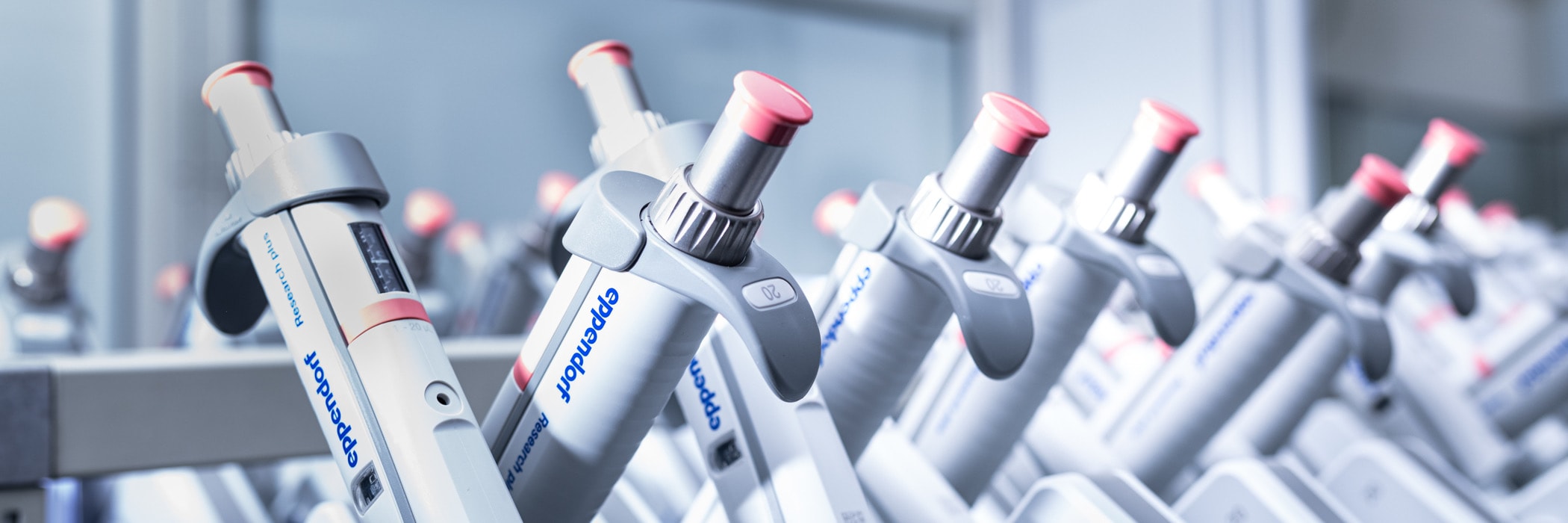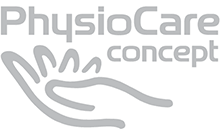
Customer Safety & Health
Workflows in today’s laboratories are becoming ever more condensed, and the strain of laboratory work is constantly increasing. The associated tasks are often repetitive and may thus expose staff to one-sided strain. For this reason, we strive to make this type of work as easy as possible by providing life science products that are beneficial, especially from an ergonomic point of view. In this context, our understanding of ergonomics extends beyond the products themselves to the laboratory environment as a whole.
Eppendorf began optimizing the ergonomics of its laboratory equipment back in the early 1970s. Since then, our company has been known for the ergonomic properties of its pipettes in particular. In 2003, we launched our PhysioCare Concept®. After initially focusing on liquid handling devices, we have now successfully applied this concept to all Eppendorf products.
Our PhysioCare Concept®

Eppendorf products are considered to be well-designed, high-quality and developed to meet the needs of their users. This reputation is based to a large extent on the Eppendorf PhysioCare Concept®. Since the concept aims to cover the entire scope of ergonomics of day-to-day work in laboratories, it applies to our entire range of laboratory products. In addition, we consider ergonomic aspects in every new product developed. The PhysioCare Concept is based on three spheres:
- The user: The concept ensures ergonomic design and the optimization of the product depending on the individual needs of the user.
- The laboratory: New devices can be easily integrated to suit the specific conditions of any laboratory.
- The workflow: The concept helps improve laboratory processes in general – and the results achieved by the entire company.
Our development teams carry out an intensive usage and test phase to design and implement practice-based improvements to our products. Their motivation is to find ways to make using a product even easier and more enjoyable.
Enhanced product ergonomics: Eppendorf centrifuges
Some types of centrifuges are large, tall and take up a lot of space on laboratory benches. People of shorter stature may find it hard to reach the lids of the centrifuges, thus making it difficult – and dangerous – to fill them. Lower loading heights prevent accidents from occurring. We ensure that the lid of the centrifuge, when open, is within easy reach for people of average height. In addition, only minimal effort should be required to close it. With Eppendorf centrifuges, a gentle push is all it takes to close the lid, reducing strain on the back and wrists.
The lid of a centrifuge must be tightly sealed so that it generates as little noise as possible during operation. Here, too, ease of use plays a pivotal role. The Eppendorf QuickLock® rotor lid can be securely locked by rotating it just one quarter of a turn, reducing strain on the wrists.
Using centrifuge adapters, laboratory staff can place samples safely and securely into the centrifuge. Different adapters should be used depending on the vessel. A small gap between the vessel and adapter, or unevenly shaped bases, can result in a broken vessel and an unusable sample. By using different colored rotor adapters, we make it easier to select the correct size to reduce the risk of unwanted incidents.
Product safety as a hallmark of quality
The improper handling of life science products and laboratory samples places users at risk of injury – especially when working with samples containing harmful substances. Our goal when developing Eppendorf products is to reduce this risk. We make sure to keep the duration and proximity of contact with samples to a minimum.
Our products are designed to be extremely safe when operated by professionals. They must always comply with specific product group safety standards and internal and external quality specifications. For example, we always subject centrifuges to a crash test and check whether their casing will hold if the rotor inside the chamber breaks at high speed. No components should escape from the device, and it should barely move.
Identifying & minimizing product risks
Our new methods and products undergo intensive quality and safety testing during the research and development process. We apply a milestone concept and involve our company’s internal auditauditAn audit examines whether processes, activities or management systems meet defined or required standards, guidelines, norm regulations or legal requirements. unit in the process. This allows us to identify and remedy potential product development errors at an early stage. Several internal stakeholders carry out quality and safety-related approval processes. More extensive reviews are often performed in line with the principle of dual control.
In addition, we perform regular stress tests on materials and components, which vary in their number and level of detail depending on the type of product. To this end, we typically estimate the average daily use of the product in the laboratory and correlate it to a theoretical operational lifetime. The stress level measured during the laboratory test usually exceeds the real stress level by a significant margin. The objects being tested, such as the hinges of locking mechanisms, are opened and closed up to 100,000 times. Aging tests are also performed, which involve repeatedly exposing a product to light or heat and testing how this affects its resistance to chemicals.
Before we begin manufacturing a product, customers test it for several weeks under real conditions. They record different test parameters, which we subsequently evaluate, and they note any potential critical points. Where required, we also carry out early trials involving customers during the product design and development stage. With an agile project development process in mind, we intend to obtain and integrate feedback from users at additional development stages in the future.
Our Product Service unit employs a central database of potential problem cases reported by customers which help identify and follow up on defects after products have been launched. If a problem occurs frequently or is found to be serious, employees from the Quality, Production, Service and Sales units, as well as the relevant business division, will investigate and assess the situation and decide on any corrective measures that need to be taken. Once these measures have been implemented, we check to see whether the problem has been successfully resolved. The entire process is documented throughout.
Standards & guidelines
During product development, we comply with all applicable national and international regulatory requirements, many of which define the scope for development options. Such requirements are increasing worldwide, with more and more countries aligning their national regulations with existing European Union and U.S. regulatory frameworks such as the REACH Directive and the supplementary EU RoHS Directive 2011/65/EU, restricting the use of certain hazardous substances in electrical and electronic equipment.
The statutory requirements of relevance for compliance with chemicals and materials regulations mainly relate to hazard communication, as well as to local and regional chemical registration activities. Consequently, it is essential for Eppendorf to be able to clearly identify the source materials used in its products.
Product safety information for customers
In principle, all users of Eppendorf products are considered trained professionals. As a result, we assume that our products will be used properly. Our initial consultation, however, is aimed at a broader group – including purchasing departments, distributors and non-technical managers. Generally, these individuals have a limited background knowledge of the life sciences. We have addressed this concern by producing a broadly based portfolio of product information. In keeping with statutory requirements, we provide our customers with instructions for use and, where appropriate, instructions on how to unpack and install products safely. The information is also available online. The relevant material safety data sheets (MSDS) can also be accessed online for products with potentially harmful chemical ingredients such as lubricants, coolants or batteries.

